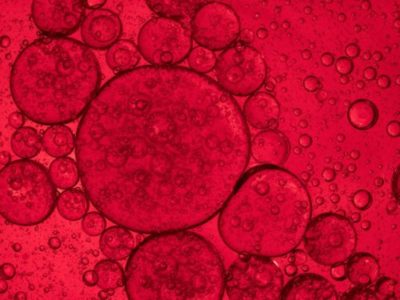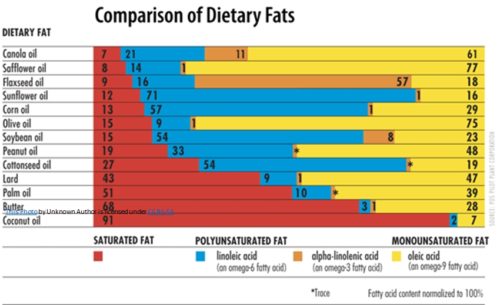
Animal Fat Vs Vegetable Fat | Saturated Fats Vs Unsaturated fats : Perceptions and Realities
Fats we eat
For over half a century the concept of eating healthy has become synonymous with avoiding dietary fat and cholesterol, especially saturated fat. A diet low in saturated fat remains at the heart of nutritional advice in many countries for lowering plasma cholesterol and reducing cardiovascular disease (CVD) risk.
Indians experienced a dramatic increase in heart disease as they urbanized, according to an article in the Journal of the Indian Medical Association, 2000. The most likely reason was their adoption of Western foods, especially switching to vegetable oils instead of using traditional ghee (clarified butter) for cooking.
Animal fats and vegetable oils both include unsaturated and saturated fats. Butter is 51 per cent saturated fat and 24 per cent unsaturated fat. Olive oil is 14 per cent saturated and 84 per cent unsaturated, but coconut oil (another vegetable fat) is 90 per cent saturated.
So while it’s true to suggest that most vegetable oils have more unsaturated fat than animal fats, it isn’t true to say that animal fat is entirely saturated and plant fat is entirely unsaturated.
Action of Oxygen on different Fats and its impact
Oxygen is highly reactive. When it reacts with iron we get rust. When it reacts with wood, we get fire (if the temperature is right). And when it reacts with fat, it breaks that fat down into a range of dangerous chemicals and destroys the integrity of any cell made from fat – which is every cell in our body.
We have two defences against this process of oxidation. First defence is, if we take saturated fats , than same is very stable in terms of oxidation process.With the oxygen , saturated fat is the very stable to oxidation . Secondly, for any fat that is oxidised, we have our own defence – chemicals called anti-oxidants.
Polyunsaturated fats are exactly the opposite ,they react quickly with oxygen. This is a bad thing in a body that needs to be as oxygen-resistant as possible. Oxidated fats can lead to the random destruction and out-of-control cellular growth otherwise known as cancer. And they can create the lesions that lead to heart disease.
In the last hundred years we’ve gradually and systematically replaced all the saturated fats in our diet with destructive polyunsaturated fats. And just for good measure, we’ve added huge quantities of sugar to make the destruction happen quickly.
Three things that spoil health in today world are due to misdeeds of polyunsaturated fats, trans fats, and refined carbohydrates.
Role of temperatures in Fats and why the same is important
Fats and oils are combinations of fatty acids. The more unsaturated fatty acids there are in the mix, the more likely the mixture is to be liquid at room temperature (22°C) and called an oil. The more saturated a fat, the more likely it is to be solid at room temperature and called fat.The more saturated fat there is in the mix, the less likely it is to react with air (or oxidise) and go rancid.
Polyunsaturated fats oxidise quickly because they have a lot of double carbon bonds that can react with the oxygen in the air. This is why margarine will go rancid quickly if we leave it out of the fridge but butter could last for weeks or months, depending on the room temperature.
Mammals, including us, want their fat stores to be relatively liquid at their body temperature (around 37°C) and non-reactive. If our fat was as solid as candle wax, we wouldn’t be able to move.
In contrast, most seed-based fats (such as soy, canola and sunflower oil) need to be available to the plant when it’s germinating (generally in the colder months), and so need to work at lower temperatures. Plants need fats that are higher in polyunsaturated and still liquid at lower temperatures. The same goes for fish, which need their fat to be liquid even in cold water.
Tropical plants have different concerns. They need their fat supplies not to go rancid in the tropical sun. So palm and coconut oils are very high in saturated fats.

Omega-3 fats are a type of polyunsaturated that tends to be anti-inflammatory, while omega-6 fats have the opposite effect.
Dr. Frank Hu Harvard School of Public Health says “Conventional wisdom holds that the more fat you eat, the more likely you are to become obese. However, the evidence does not support the conventional wisdom…” He cited 16 long-term studies (6 to 18 months in duration) that showed “no evidence that a low-fat diet is more beneficial. ”What’s more, recent studies confirm that healthy fat consumption promotes sustainable weight loss (something we’ve been saying for years!). “Studies conducted in the past three years have found a moderately high-fat diet…to be more beneficial (than low-fat diets) in terms of adherence, weight loss, and weight maintenance, while also reducing cardiovascular risk factors,” Dr. Hu Affirmed.
Four types of Fats and their affects
| Type of Fat | Source | Brief descriptions | Effects |
| Trans-fatty acids | Manmade | Made by introducing hydrogen through vegetable oil to make it semisolid with a long-shelf life. | Worst effect on blood lipids and overall health. Their high prevalence in the modern diet is a large contributor to some of our modern health problems . |
| Saturated fats | Exclusively in animal products (two exceptions are coconut and palm kernel oil) and are solid at room temperature. | Saturated fats are structured so that all available carbon bonds are occupied by a hydrogen atom, which makes them highly stable and also straight in shape, so that they are solid or semisolid fat at room temperature. | They are less likely to go rancid when heated during cooking and form dangerous free radicals that can cause a litany of ills, including heart disease and cancer |
| Monounsaturated fat | Mainly Plant based ,Olive Oil and Sesame oil are the main component. | They are structured with one double bond (composed of two carbon atoms double-bonded to each other). Because this bond causes the molecule to bend slightly, these fats do not pack together as easily as saturated fats, so they tend to be liquid at room temperature but become solid when refrigerated. | Like saturated fats, however, monounsaturated oils are relatively stable. They do not go rancid easily and hence can also be used in cooking. |
| Polyunsaturated Fats | Our body cannot make these fatty acids, they are called “essential” and must be obtained from foods. They do not pack together easily. They remain liquid, even when refrigerated. | They have two or more double bonds. The two polyunsaturated fatty acids found most frequently in our foods are linoleic acid with two double bonds (called omega-6) and linolenic acid, with three double bonds (called omega-3). (The omega number indicates the position of the first double bond.) | Unpaired electrons located at the double bonds make these oils highly reactive. When they are subjected to heat or oxygen, as in extraction, processing, and cooking, free radicals are formed. It is these free radicals, not saturated fats, that can initiate cancer and heart disease. As such, industrially processed polyunsaturated oils, such as corn, safflower, soy, and sunflower oils, should be strictly avoided. |
Dairy Fat and cholesterol :Let us understand the full facts
Except in a fairly small percentage of people, dietary cholesterol has almost no impact on blood cholesterol levels. Quite in fact, your body (your liver to be exact) generally makes more cholesterol than you eat in a day.
The Benefits of Cholesterol
- It helps in developing hormones that protect against stress, heart diseases and cancer.
- The development of all sex hormones like testosterone, oestrogen, progesterone etc helped by cholesterol.
- Cholesterol helps to make vitamin D.
- It has the great property to act as an antioxidant, protecting against free radical that causes damage to heart and cancer cells.
- Cholesterol is also needed for the proper functioning of serotonin receptors in the brain. As serotonin is the body’s natural “feel-good” chemical, hence inadequate cholesterol levels have been linked to aggressive and violent behaviour, depression, and sometimes suicidal tendencies.
- Children need cholesterol-rich foods through their growing years to make sure they have active development of the nervous system and brain.
- Dietary cholesterol also plays an important role in maintaining the health of the intestinal wall. This is why low-cholesterol diets can lead to leaky gut syndrome and other intestinal disorders.
- The body uses cholesterol to repair damaged cells. This means that higher cholesterol levels are actually beneficial.
Healthy traditional fats
- Animal fats, especially butter, Ghee.
- Traditional vegetable oils—extra-virgin olive oil, expeller-expressed sesame oil and mustard oil, expeller expressed flax oil.
- Tropical oils—coconut oil and palm oil.
Comparison between natural diets and Processed Modern diets
| Natural /Traditional diets | Processed Modern Diets |
| Maximum source of nutrients | Less than Natural source foods |
| Animal Fats | Vegetable Fats |
| Dairy products, raw and/or fermented | Dairy products, pasteurized |
| Grains and legumes, soaked/fermented | Grains, refined and/or Extruded |
| Unrefined sweeteners (honey, maple syrup) | Refined sweeteners |
| Fermented vegetables | Canned vegetables |
| Fermented beverages | Modern soft drinks |
| Unrefined salt | Refined salt |
| Natural vitamins in foods | Synthetic vitamins added to Foods |
| Traditional cooking methods | Microwave, irradiation |
| Traditional seeds/open pollination | Hybrid seeds, GMO seeds |
Why you should eat Dairy Fats
- Dairy fat has a perfect fatty acid profile.
- Most of the fats in butter are saturated or monounsaturated, making it very stable.
- You can cook foods in butter, even at relatively high temperatures, and it will not break down.
- Dairy Fats contains medium-chain fatty acids, although in lower amounts.
- Uniquely, butter contains short-chain fatty acids with immune-stimulating and antimicrobial properties.
- Dairy Fat contains the right amount and the perfect balance of omega-3 and omega-6 fatty acids.
- When you eat healthy fats like those found in butter, cream, nuts, meats, and eggs, your body actually produces a hormone in the stomach and small intestine that signals that you’ve eaten enough. When you feel satiated, cravings, and the persistent hunger you experience on most diets, are banished.
- Many health problems will resolve themselves and you will have more energy and a more optimistic attitude toward life.
Nutrient-dense foods for great health
- Increased dosage of vitamins A and D by taking cod-liver oil along with high-vitamin butter oil.
- Fermented beverages Providing nutrients and beneficial enzymes, these are key to relieving digestive disorders, kidney.
- Raw animal foods to provide vitamins B6 and B12.
- Dairy products, raw and marinated meat and fish are a key part of the great health.
- Germinated foods.
Benefits of eating Saturated Fats and avoiding unhealthy fats
- Helps in overcoming fatigue: The medium-chain fatty acids of SFA (Saturated Fatty acids) provide energy and also fight pathogens in the digestive tract that contribute to fatigue.
- Quick energy: Give quick energy, prevent low blood sugar, and support the thyroid gland.
- Dealing in stress and depression: SFA helps prevent low blood sugar and helps the body make the adrenal hormones it needs to deal with stress.
- Hypoglycemia: Plenty of healthy fats at each meal help prevent drops in blood sugar.
- Food cravings: You experience cravings when your body isn’t getting the nutrients it needs from food. SFA are immensely satisfying.
- In addition, they supply vitamins A and D, needed to assimilate minerals and other vitamins.
- Bacterial and fungal infections: They are antimicrobial in nature and helps fight bacterial infections.
- Irritable bowel syndrome and Gas and bloating are prevented by eating SFA.
- Skin problems such as eczema, dry skin, scaly patches: SFA helps maintain the right fatty acids in the cell membranes, thereby contributing to beautiful skin. Vitamins A and D are also very important factors in nourishing the skin.
- Sagging, wrinkled skin: Plentiful saturated fats in the diet are absolutely essential for avoiding wrinkles. Excess polyunsaturated oils make the cell walls lose thereby contributing to wrinkles. Furthermore, these oils are invariably rancid and contain free radicals (reactive atoms or molecule fragments) that damage cells and contribute to ageing.
- Dandruff, lifeless hair: The thyroid-supporting combination of coconut oil and cod-liver oil will result in shiny, healthy hair.
- Liver detoxification and support are given by saturated fatty acids.
- Fats and Brains: Sixty per cent of the brain is composed of fat. Phospholipids (which contain about 50 per cent saturated fats) help make up the brain cell membranes. They contain two fatty acids and one protein-like component. Generally, the phospholipids in the cell membranes contain one saturated fatty acid and one unsaturated fatty acid. Thus you nourish your brain cells when you eat saturated fats, and when you don’t eat enough saturated fats, the chemistry of your brain may be compromised. In a recent study, rats given vegetable oils low in saturated fats and omega-3 fatty acids had more strokes and shorter life spans.
Truth about Polyunsaturated Fats
Industrial commercial Oils are extracted by chemicals at high temperatures, a process that turns them rancid, destroy their nutrients and produces free radicals. These free radicals can contribute to a host of diseases, including cancer, heart disease, premature ageing, autoimmune disease, digestive disorders, and infertility.
Some experts promote these oils because they contain omega-6 essential fatty acids, but most of us consume ample amounts of these fats from other foods (such as legumes, grains, nuts, green vegetables, olive oil, and animal fats), and excessive amounts can be harmful, resulting in an unhealthy ratio of omega-3 to omega-6 fatty acids.
List of Fats containing PUFA
